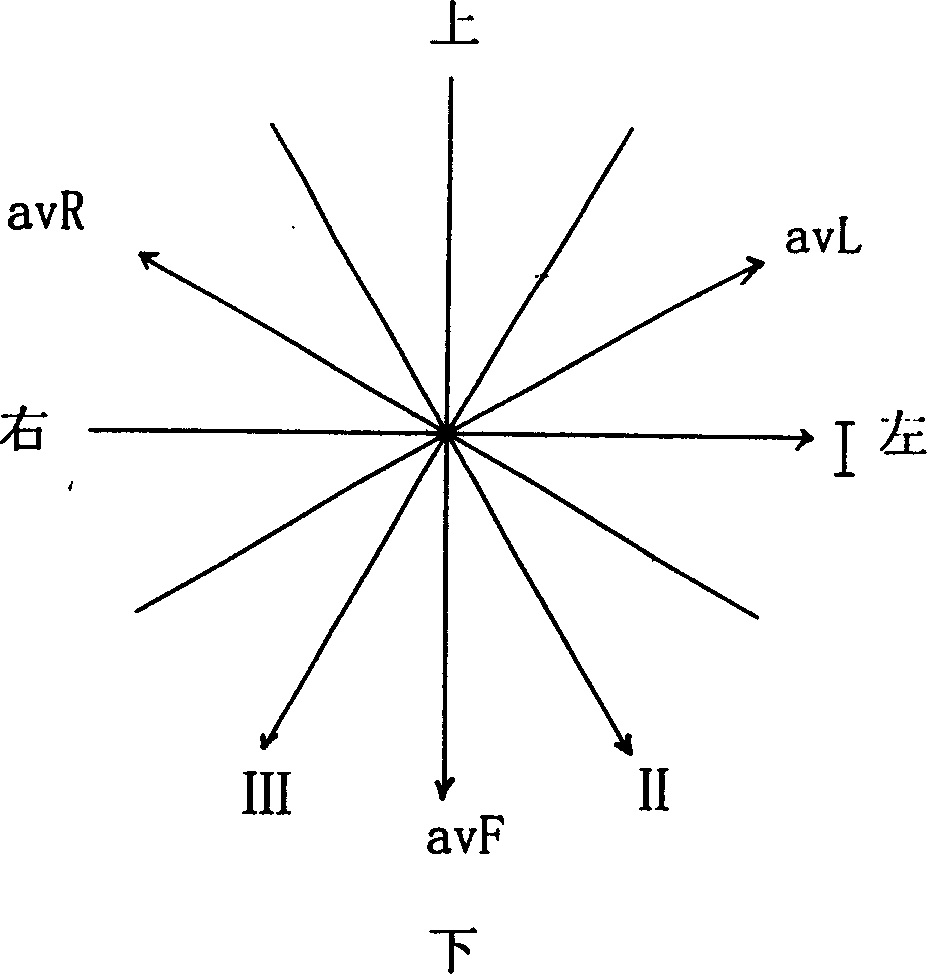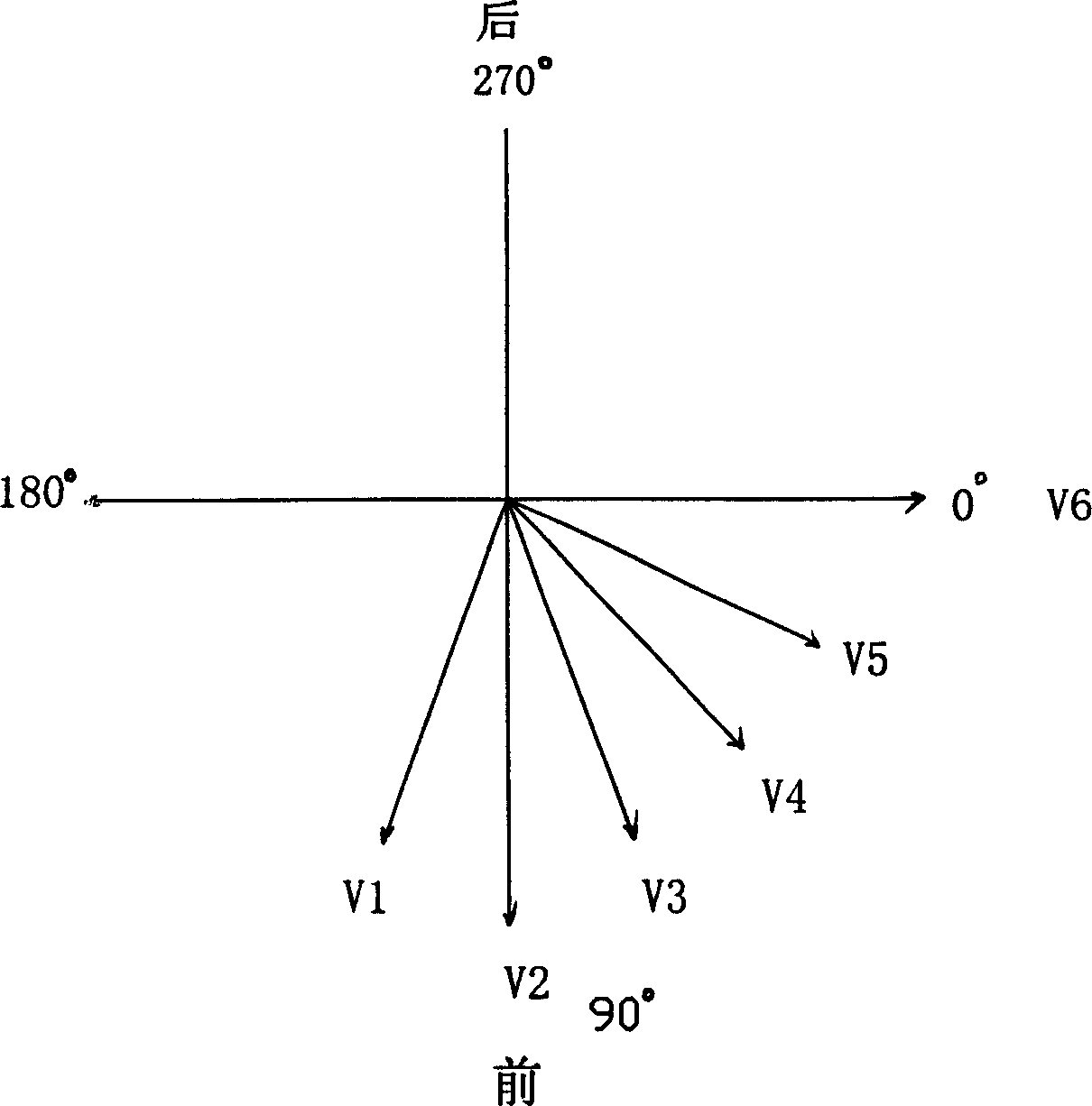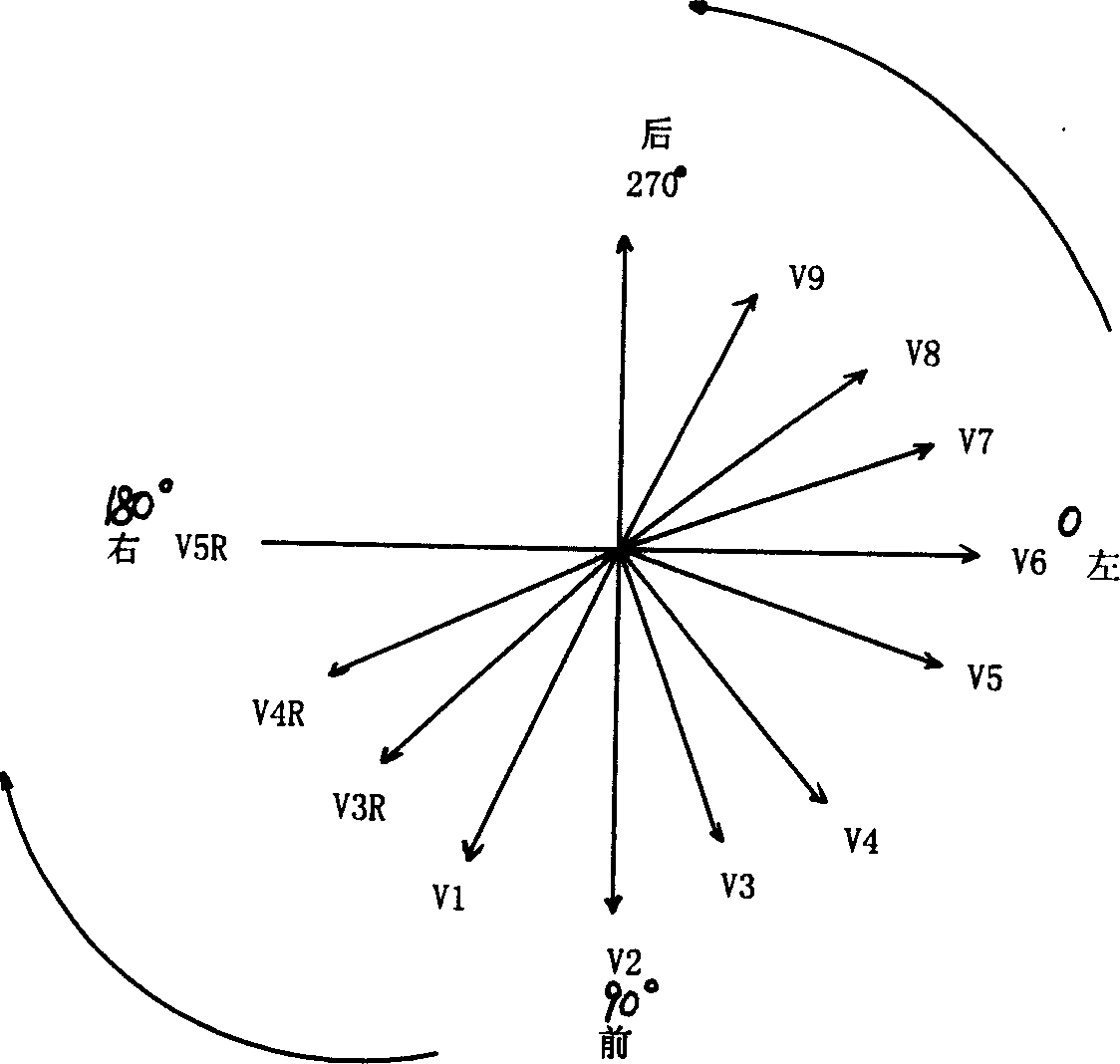Method for changing multiple synchronous electrocardiogram lead in corrected orthogonal electrocardiogram mode
A mode conversion, electrocardiogram technology, applied in the fields of medical science, sensors, diagnostic recording/measurement, etc., can solve the problems of pathological ECG waveforms, inconsistent graphics, and distortions that cannot be recorded by ECG electrodes
- Summary
- Abstract
- Description
- Claims
- Application Information
AI Technical Summary
Problems solved by technology
Method used
Image
Examples
Embodiment Construction
[0088] The present invention converts a variety of synchronous electrocardiogram lead methods in a corrected orthogonal electrocardiogram mode. Orthogonal ECG projection derivation of multiple synchronized ECG lead methods. As shown in Figure 1 and Figure 2, the frontal plane formed by the X-Y axis and the transverse ECG lead axis formed by the X-Z axis are the lead conditions of the current twelve-lead synchronous ECG, which includes three double-leads I, II, and III. Polar limb leads, three unipolar pressurized limb leads avR, avL, and avF, and six chest leads V1-V6. As shown in Figures 3, 4, 5, 6, 7, 8, and 9, on the basis of twelve leads, according to the theory of ECG secondary projection, a dynamic electrocardiogram detector is used. This embodiment uses the BETHUNE-21 series The dynamic electrocardiogram detector realizes multiple synchronous electrocardiogram lead methods of the present invention, and the method is:
[0089] First, the synchronous 18-lead ECG lead me...
PUM
 Login to View More
Login to View More Abstract
Description
Claims
Application Information
 Login to View More
Login to View More - R&D
- Intellectual Property
- Life Sciences
- Materials
- Tech Scout
- Unparalleled Data Quality
- Higher Quality Content
- 60% Fewer Hallucinations
Browse by: Latest US Patents, China's latest patents, Technical Efficacy Thesaurus, Application Domain, Technology Topic, Popular Technical Reports.
© 2025 PatSnap. All rights reserved.Legal|Privacy policy|Modern Slavery Act Transparency Statement|Sitemap|About US| Contact US: help@patsnap.com



